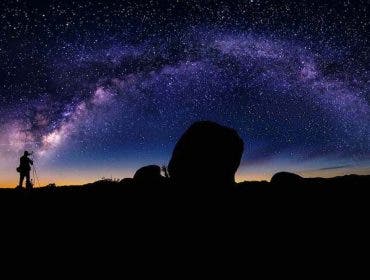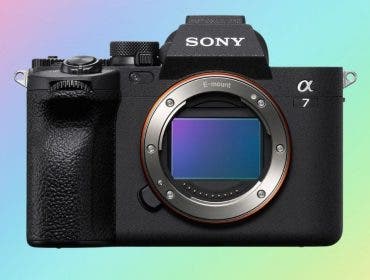It can be overwhelming for any beginner to choose their first lens/lenses from the wide variety of choices available for every brand of camera. The simple solution is usually to go for a good walkaround lens that offers a good focal range that suits nearly all types of photography. But once you gain experience and begin to feel the need to expand your gear, you’ll eventually want to consider lenses that offer “extreme” focal lengths. Both wide-angle and telephoto (or zoom) lenses are invaluable to photographers. They offer fields of views that we can’t see with the human eye.
Their names are pretty self-explanatory, but once you’ve upgraded to a DSLR or mirrorless camera that gives you a chance to shoot interchangeably with both types of lenses — like the Canon EOS R5, the Sony Alpha a7S III, or the Nikon D850 — you’ll realize that they do so much more than offer two different fields of view. In this guide we compare and contrast telephoto lens and wide angle lenses.
What is a Telephoto Lens?

Telephoto lenses have longer focal lengths and are great for bringing distant scenes and subjects closer. Like wide-angle lenses, they come in both prime (fixed focal length) and zoom varieties.
The term “telephoto” is also a general term to describe lenses with focal lengths that create a narrow field of view beyond 80mm. However, they are divided into three categories:
- Short Telephoto – Ranges from 85mm to 135mm and are great for everyday use as they are compact and lightweight.
- Medium Telephoto – Bigger, longer, and heavier as they offer focal lengths between 135mm to 300mm.
- Super Telephoto – With focal lengths going beyond 300mm, this type of telephoto lens offers telescope-like magnification and are too heavy for handheld shooting.
Unfortunately, the longer the focal length, the darker your image gets. To solve this, some higher-end telephoto lenses are integrated with a wider maximum aperture or iris opening to allow more light to enter the lens.




Aside from being able to “zoom in” with the optics rather than digitally where only the pixels on the screen are magnified, telephoto lenses affect the relative size of your subject to the background and compresses them together. This makes your background look bigger and closer to your subject—as if your subject is leaning against the background.
See how different focal ranges can affect field of view compression in this video:
When paired with a shallow depth of field, this compression will give you bigger and smoother-looking bokeh than if you were using a wide-angle lens. This cool technique can be useful when you want to bring your background into the shot while effectively highlighting your subject with focus.
You can see what we mean by checking out this tutorial video at AdoramaTV, starting at the 4:19 mark:
When to Use a Telephoto Lens
The most obvious reason for using a telephoto lens is the need to get in on the action. You’ll be able to “get closer” to the scene without actually moving closer. But given its heavier build, not everybody can use and afford medium to super telephoto lenses. So before you invest in a telephoto lens, figure out whether or not the following reflects your photographic goals:
- Shoot from the sidelines at sports events
- Cover events where you will need to capture key moments without disturbing the moment or wasting precious time in fighting your way through crowds and obstacles just to get that perfect shot
- Do professional wildlife and nature photography
- Try your hand at astrophotography
- Capture majestic images of the moon up close
- Decrease the visual distance between your subject from the background
- Produce better-looking bokeh
Different Types of Telephoto Lenses
Telephoto lenses are extremely varied in their features and capabilities. They’re used in a variety of applications, but one commonality among all telephoto lenses is the ability to display a focal length that’s larger than their actual physical length. This is achieved in one of two ways: with refraction or with mirrors.
- Refractive lenses contain multiple internal lens groups, also known as lens elements. They bend light and then straighten it back out before it hits the sensor or film to achieve a magnified image.
- Mirror lenses contain multiple curved mirrors inside the lens body to bounce light, creating magnification. This allows a much smaller lens to achieve longer focal lengths.
When choosing a refractive telephoto lens vs a mirror telephoto lens, it is important to remember that while refractive lenses are more expensive, they have a much higher image quality overall and are more commonly used.
What is a Wide-Angle Lens?
As the name suggests, wide-angle lenses offer a wider angle of view of 64° to 180°. Interchangeable wide-angle lenses have shorter focal lengths marked as smaller numbers. These are 34mm and below, where the field of view starts becoming wider than what “normal” lenses offer.

When shooting wider with an ultra-wide angle or fisheye lens at focal lengths wider than 14mm, the image starts to become distorted at the outside edges of the frame. This type of lens can definitely create unique images. Though not all photographers can benefit from using a wide-angle lens due to the distortions that it creates.




As you can see, wide-angle lenses bring in more of the scene. This can be very useful when you want to include more elements into the frame, add context, and provide an environment for your subject.
You’ll also notice that the center of the image looks much further away when shooting from the ground. This results in an exaggerated perspective that adds depth and gives your viewers more to look at.
With the edges of the frame stretched out, lines and horizons end up looking curved. This distortion doesn’t always look good, particularly when shooting portraits. That’s why it’s important to know when you should and shouldn’t use it.
When to Use a Wide-Angle Lens
- Capture a table full of food or group shots in confined spaces
- Show an entire room for real estate photography
- Make images and videos look more immersive (using action cameras with built-in wide angle lenses)
- Take photos of buildings for outdoor architecture photography
- Photograph skyscapes, cityscapes, and wide panoramic landscapes (if you don’t mind the distortion)
- Conveniently take selfies without getting cropped out
- Create artistic and abstract images, especially with fisheye lenses
- Increase the visual distance between your subject from the background
Types of Wide Angle Lenses
There are three distinct types of lenses within the category of wide angle lenses: wide, ultra wide, and fisheye. Lenses in the 24-35mm range are considered wide angle, 18-24mm are ultra wide angle, and anything wider than 18mm generally falls under the category of a fisheye lens.
For most traditional applications, consider using a wide angle and ultra wide angle option. They provide the best balance of field of view and visual quality. Fisheye lenses are known for their curved lines and strange perspective, which can be stylistically useful for some applications, but quite jarring in others.
Wide vs Telephoto Lens

After learning about the unique effects that wide-angle and telephoto lenses can produce, you’ll realize that the lenses shouldn’t be confused with each other. When it comes to choosing between the two, it comes down to specific needs for a zoomed-in telephoto vs wide-angle perspective.
Wide Angle vs Telephoto Lenses: Major Differences
Field of view is the obvious difference in the wide-angle vs. telephoto lenses comparison. A wide-angle lens provides a wide field of view and allows you to capture more of the scene in front of view. On the other hand, a telephoto lens has a narrower field of view.
Depth of field is another feature you can’t ignore in making your wide-angle vs. telephoto decision. If you want to have the entire scene in focus, you need a deep depth of field, therefore, a wide-angle lens. Conversely, if you need to create a shallow depth of field and blur the background, it is easier done with a telephoto lens, as the depth of field decrease with longer focal lengths.
In terms of size, telephoto lenses are longer and, as a result, heavier and harder to manipulate. Because they have a short focal length, wide lenses are shorter and thus lightweight and easy to handle.
Because of the large field of view of wide-angle lenses, filters may block the corners of the image. The effect is called vignetting. It often appears when you use ultra-wide lenses or multiple filters. You don’t have to worry about filter vignetting with a telephoto lens.
When you know what a telephoto lens is, you know that it reduces the sense of depth in the image. A telephoto lens makes the objects in the background look bigger and closer to the foreground objects. Wide lenses do the opposite and make background objects look smaller and further away from the camera.
Pros and Cons of Telephoto Lenses
| Pros | Cons |
| You can keep more distance between you and your subject, which is especially useful for wildlife. | Telephoto lenses are often heavy and bulky. |
| You can photograph distant objects without needing to physically move. | You may need to use a tripod to balance the lens. |
| You can act as a passive observer during events like weddings and performances. | Telephoto lenses with extremely wide apertures are often very expensive. |
Pros and Cons of Wide Angle Lenses
| Pros | Cons |
| You can photograph very large objects like buildings. | Wide angle lenses often have issues with distortion. |
| They are available in very wide apertures. | They aren’t flattering for portraiture. |
| They create interesting perspectives. | High-quality options can be expensive. |
As for the specific focal range, you will have to gain more experience in shooting at different focal lengths. Being able to see the variety of resulting angles of view for yourself is really the best way to choose perfect lenses that will be beneficial for your chosen type of photography.
It can be overwhelming for any beginner to choose their first lens/lenses from the wide variety of choices available for every brand of camera. The simple solution is usually to go for a good walkaround lens that offers a good focal range that suits nearly every type of photography. But once you gain experience and begin to feel the need to expand your gear, you’ll eventually want to consider lenses that offer “extreme” focal lengths.
Both wide-angle and telephoto (or zoom) lenses are invaluable to photographers. They offer fields of views that we can’t see with the human eye. Their names are pretty self-explanatory, but once you’ve upgraded to a DSLR or mirrorless camera that gives you a chance to shoot interchangeably with both types of lenses, you’ll realize that they do so much more than offer two different fields of view.
If you’re interested in finding out which type of lens you should add to your gear kit, it helps to learn more about how they work and see the kinds of images they are capable of producing. When used to your advantage, one or both lenses can help you become a more efficient and successful photographer.






